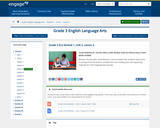
In this lesson, student identify the main message or lesson of a story using key details from the text.
- Subject:
- English Language Arts
- Material Type:
- Lesson Plan
- Provider:
- EngageNY
- Date Added:
- 04/13/2017

In this lesson, student identify the main message or lesson of a story using key details from the text.
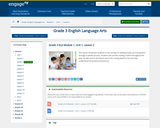
In this lesson, students identify the message or lesson of a story using key details from the text and document what they learn about a topic by sorting evidence into categories.
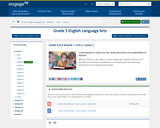
In this lesson, student identify the message or lesson of a story using key details from the text.
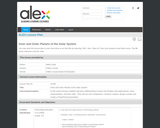
In this comprehensive lesson, students work collaboratively to learn about the eight planets. They will research a planet's size, its comparison to other planets and its characteristics and use the information they find to publish an acrostic poem to share with their classmates. They will also produce a poster and create a technology presentation such as a Prezi or a PowerPoint.
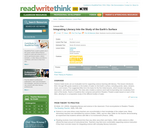
Water covers 71% of the earth?s surface?does it get the instructional time it deserves in your busy curriculum? Students wade right in to the study of bodies of water as they read and discuss science trade books and work together to develop Readers Theater scripts based on selected titles.

In this lesson, we will be reading “Juanita and the Beanstalk” out of the Reading/Writing Companion. The lesson will begin with a review of story elements. Students will complete a three column note sheet while watching a story element video. The note sheet will also be used for their final activity of this lesson. After reading “Juanita and the Beanstalk”, review the story and it’s vocabulary using PearDeck. Students will complete a response to text writing prompt, as part of planning for their formative assessment.
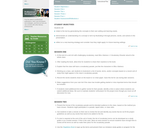
In this lesson, students combine vocabulary exploration with word play by planning their own vocabulary parade, modeled on the activities in the text after a read-aloud of the picture book, Miss Alaineus: A Vocabulary Disaster. Students brainstorm a list of vocabulary terms from a recent unit of study and then design concrete ways to illustrate the terms. The presentation of terms can be in the form of a parade, or a video, which might play during parent conferences or open house.

Upon completion of genre study on poetry, students will create their own limerick. While reading poems in their Wonders Literature Anthology and Student Reading / Writing Companion, students will learn about inventions through various poem structures. Students will be provided with a list of inventors to research, selecting an invention to create their own limerick while using “Cold Feet”, “Our Washing Machine” and “Bugged” (p.166) as a model. Students must include poetry elements such as metaphors / similes, alliteration and rhyming words in their written poem. Students will record themselves reading their poem using their Chromebook, upload their video into Google Slides and include a photo representation of the invention.
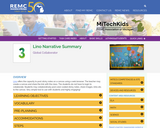
Lino offers the capacity to post sticky notes on a canvas using a web browser. The teacher may create a canvas and share the link with the class. The students do not have to login to collaborate. Students may collaboratively post color-coded sticky notes, share images, links etc. to the canvas. Very simple tool to use with students and highly engaging!
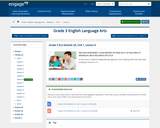
In this lesson, students apply close reading skills they have been building in Lessons 2-5.
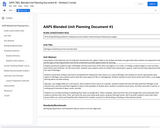
Students previously looked at maps of Michigan and discussed some of the cities and regions in our state. In reading, students began to read narratives, both fiction and nonfiction. For the entry event, students were asked to select an artifact that represented a special, small moment they experienced within the state of Michigan.
Students shared their artifacts and stories and plotted the setting from their stories on a map of Michigan. We realized our stories represented many regions in Michigan and could be used to describe many aspects of life as a Michigander. Students wanted to share these stories with others, so we began learning about narrative writing.
Typically, I use Google Slides for a mini-lesson, to allow students time to work on a specific, standard related task that will help build their Michigan small moment story, and then pull them together to share a few examples of student work. Students sometimes work alone, but often work with a partner or small group to brainstorm ideas, revise, and edit.
After, students will publish their ideas on Google Docs. When completed, they'll put their doc onto Google Sites or Google Slides and incorporate other media to enhance their story. Then, we'll print the story and create book covers using the iPad app Canva. We'll use both models to share with other classes within our school and hopefully with students from another country (I'm still working on finding an international school).
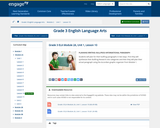
In this lesson, students will plan for their bullfrog paragraphs in two ways. First they will synthesize their Bullfrog Research into categories and then they will plan their actual paragraph using the Accordian graphic organizer from Module 1.
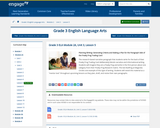
In this lesson, students imagine they are a freaky frog and write in the first person about one category from their Freaky Frog Research matrix.
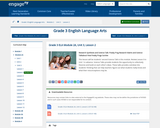
In this lesson, students participate in science talks to collectively synthesize and build on each other's ideas about how freaky frogs survive.

Students learn ways people use what they have to get what they want and why different ways to produce and allocate goods and services were developed.

This course was created by the Rethink Education Content Development Team. This course is aligned to the NC Standards for 3rd Grade ELA.

This resource accompanies our Rethink 3rd Grade ELA course. It includes ideas for use, ways to support exceptional children, ways to extend learning, digital resources and tools, tips for supporting English Language Learners and students with visual and hearing impairments. There are also ideas for offline learning.

This course was created by the Rethink Education Content Development Team. This course is aligned to the NC Standards for 3rd Grade English Language Arts.
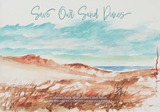
Help students explore an important moment of environmental activism in North Carolina with Save Our Sand Dunes by Hannah Bunn West and with Ann-Cabell Baum. This complementary learning guide to the book is designed to help educators guide young readers in discovering how Carolista Baum rallied a community and advocated for local and state leaders to preserve Jockey's Ridge.
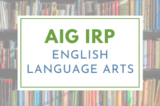
This activity for gifted learners complements close reading of Bud, Not Buddy by Christopher Paul Curtis. Throughout the reading of Bud, Not Buddy, all students will work to create a glossary of unfamiliar terms/phrases found throughout the novel that is differentiated based on readiness. This project should be assigned to students who demonstrate solid understanding of the novel and are ready for a challenge as they create not only a glossary differentiating the literal and nonliteral meanings of the phrases/figures of speech found in the novel, but also a thesaurus of other figures of speech that could be used in place of the ones used in the novel. This lesson was developed by NCDPI as part of the Academically and/or Intellectually Gifted Instructional Resources Project. This lesson plan has been vetted at the state level for standards alignment, AIG focus, and content accuracy.